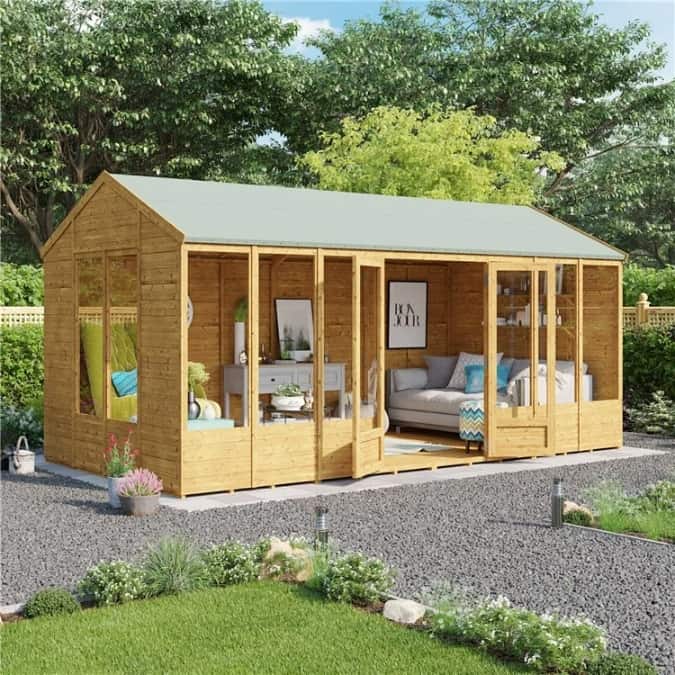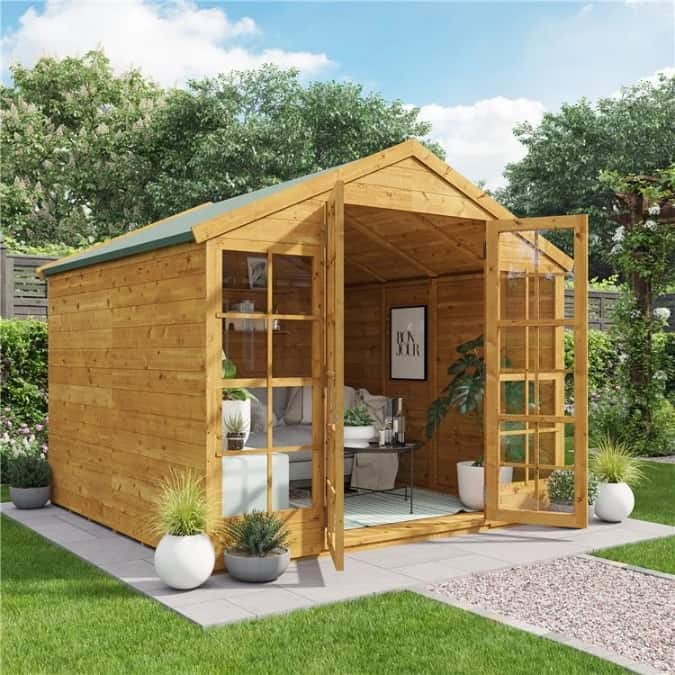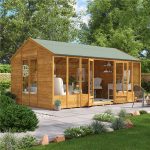Jump to:
A summer house is a place where you can relax, entertain, and connect with the beauty of your garden. Blending it with the surroundings can enhance its visual appeal, creating cohesiveness. In this guide, we’ll share three top tips to help you achieve a fusion between the structure and outdoor space.
Situate Your Summer House in the Right Spot

Placing your summer house in a location that complements the landscape will make it look like a natural part of the garden. Take a step back and evaluate the layout and available area of your outdoor space. Consider the pathways, trees, shrubs, or flower beds. Aim to position your garden room to accentuate such elements. Visualise how the structure will fit into the overall design.
Make sure the spot receives the most sunlight exposure throughout the day. Observe the sun’s movement and determine where the sunniest spots are. Moreover, think about your desired level of privacy. Take into account your fencing (if you have one) and opt for a location that offers a sense of seclusion.
Consider the Architectural Style and Design

Match the style of your summer house with your garden. A classic wooden model, such as the BillyOh Harper, suits a traditional garden setting best. Meanwhile, a modern style summer house perfectly fits a modern garden. Choose what style goes well before making a purchase.
But what if you already have one? Is there a way you can enhance it to match the outdoor setting? Absolutely—that’s where painting or staining comes to the rescue!
Painting a summer house can give the structure a new look to blend with the garden. Opt for earthy tones or shades that mimic the hues found in nature. Or go for colours that contrast with the garden, such as charcoal grey and deep navy blue. Choose a shade that you think will make your outdoor retreat a stand-out feature.
Transform Your Garden with Landscaping

Greenery softens the transition between your summerhouse and the natural environment, whether the garden is traditional or modern. Lush foliage and flowering plants complement the architectural features of a classic summerhouse. Sculptural shrubs and trees like Cypress can benefit a modern-style structure and setting. This frames the outdoor building well and provides a contemporary backdrop.
When placing plants, place them to draw attention towards the summerhouse or create pathways that lead to it. This technique can help reduce the size of the structure, making it seem less dominant and blend better with the space.
Also, consider installing trellises around and training climbers to grow along the walls. This summerhouse decoration adds a
Round-up
Focus on these three key considerations when blending your summerhouse into your garden:
- Position the garden building thoughtfully
- Match its style with your outdoor space’s aesthetic
- Enhance the surroundings with landscaping
These steps provide a practical starting point for creating a harmonious outdoor space. Explore our range of summerhouses for sale; you might find just what you’re looking for!
Up next on your reading list: Summer House Interior Ideas You Don’t Wanna Miss










